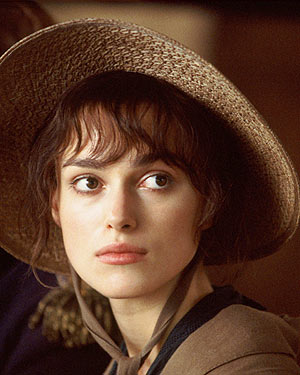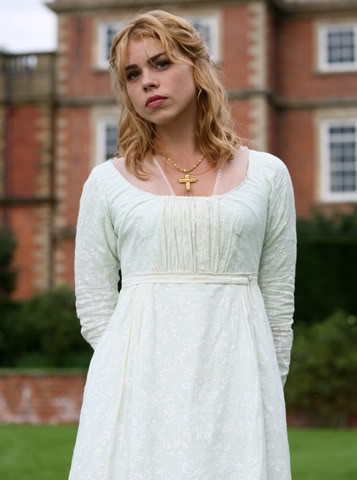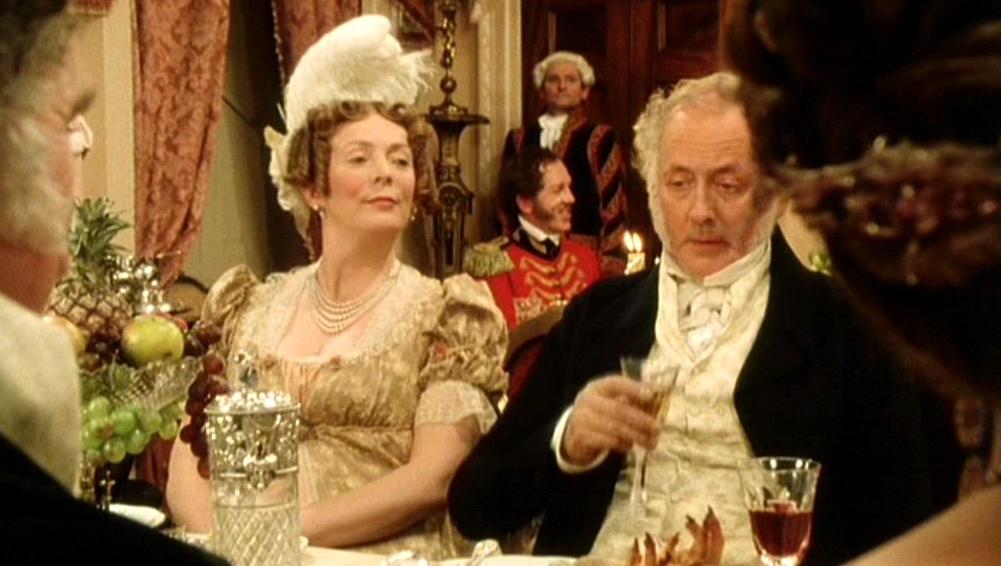The desires of Jane Austen were large and complicated. At the social level, she wanted liberty to state views, no matter whom she offended as well as exposing the orthodoxies of her time.She chose her enemies with care and analyzed their ideas with a biting but humane precision.On the personal level, she exposed the extent to which those around her were dominated by anger, recrimination, hatred and guilt. Did Jane Austen represent a stand against modernity, industrialisation and the prevailing social mores and gender politics of her time? One cannot really account for her extraordinary and enduring popularity, and emblematic status. We can never, entirely, satisfactorily, decide what she is saying to us, and why she means so much to us….

" If the harshness of Jane Austen's intelligence were properly apprehended by those who read her, she would enjoy far less popularity as a novelist than she does, let alone as a provider of material for movies which, when all is said and done, are a more verdant medium."
It is one thing to analyze the subtlety of Jane Austen’s art or to explore some of the surprises that await him who probes her work beneath the surface; it is another thing to make anyone like her work if they are temperamentally uncongenial to it. Some may feel that an unconscionable amount of genius and ingenuity has been wasted for the sake of rather miniscule results, and one might say of Jane Austen what Voltaire said of Marivaux- that he laid insects’ eggs in spider webs.

Billie Piper- Mansfield Park. Drabble:How could young Alain de Botton have cast himself as Edmund Bertram? How could Jay McInerney have so misjudged Elizabeth's reasons for rejecting Darcy? And how could Virginia Woolf have written this sentence of Austen's art: "Humbly and gaily she collected the twigs and straws out of which the nest was to be made and placed them neatly together." Humbly and gaily, Mrs Woolf? Humbly and gaily? This is almost as imbecilic as E M Forster disingenuously declaring that he was "a Jane Austenite, and therefore slightly imbecile about Jane Austen".
True, the universe may be revealed in microcosms, but there are times when one does not feel in the mood for microcosms and prefers blatant crudity to concealed subtlety. Jane Austen herself once defined her work as a “little bit, two inches wide, of ivory on which I work with so fine a brush as produces little effect after much labor.” Though exaggeratedly modest in most respects- and usually quoted to the wrong purpose- , her definition is true in a certain sense. And yet, few artists in any field who have restricted themselves to so limited an area as hers have approximated the universality and lastingness of her appeal.

Howard Jacobson:The madonna-whore thing is alive and well with us, it seems to me. Or do I mean alive and ill? The sight of Billie Piper playing Fanny Price in ITV's dramatisation of Mansfield Park last week persuaded me of this. Of all Jane Austen's novels, Mansfield Park has been the most susceptible to reinterpretation. First Edward Said, employing the methodology of reading not the novel that's been written but the novel that hasn't, turned it into a book about slavery, then the feminists set about transforming the deeply conservative Fanny Price into a vitalistic and rebellious hoyden. Hence Billie Piper's Fanny Price, all blazing pout and pouting bosom. As though we like a heroine to be principled but can't abide her buttoned up.
What she had developed was a “fractal” form of language that applied to the irregular shapes that human behavior is capable of throwing at us. The psychological caricatures she developed helped describe people as we actually saw them, and so expand our way of thinking. Her fractal language offered a systematic way of approaching human phenomena that looked more and more elaborate the more it was magnified in Jane Austen’s literary laboratory, that created images of great fascination. The unsentimental orientation was almost clinical and explains the almost total absence of drawing happenings in the outside world into her narratives. She developed a form of imaginary language where the words acted as amphibians between being and not being. It was all about pairing off ; the implication being that very simple formulas for mating could yield very complicated results.
Austen was looking for a Newton’s Law of language in which a very few symbols, can by hard work explain a human motion ( planets) around the sun:Love. Her plot narratives were not logical, they were almost geometric in a real world of rough-edged, wrinkled, crinkled and irregular pertubations of the heart.
Many of her readers simply rejoice and delight in her style, which, incidentally, despite its elegance and limpidity, is by no means flawless: her novels abound in stilted sentences and very odd syntactical constructions. She is known as been peculiarly addicted to unattached or ill-attached participles. An even larger segment of the reading public simply continues to be superlatively entertained by her and the world she created, in spite of the fact that it is a completely vanished world. We still recognize ourselves and others in her characters, for the human comedy changes only in its settings and not in its cast of characters.

Drabble:It was feminist reinterpretations in the 1980s that alerted us to an awareness that Mrs Bennet (according to Martin Amis: "stupid, prattling, coarse, greedy") is only doing her job by her daughters and that, in the event, she does it very successfully. In her introduction, Carson attributes her discovery of this reading to a lecture by Stephen Arkin, delivered "recently", but we can be fairly sure that it was preceded by Weldon, Mary Evans (in Jane Austen and the State, 1987) and others, including myself. I argued in my 1989 Virago introduction that Mrs Bennet has her virtues: she understands the importance of dinners, balls and good cooking, keeps "a good table" and makes her guests welcome. She isn't greedy, she is generous, and wants everyone to have a good time. It's her husband's fault if she overspends, as he acknowledges in the end. She has done her best to provide him with an heir. After five daughters, she gave up, and who can blame her?
It was Mark Twain who defined a good library as one from which the works of Jane Austen were totally absent. Assuredly he did not mean to be taken literally or even quite seriously, but at any rate he made his feelings admirably clear and, by singling her out, paid her a handsome compliment. One can see how the utterly sentimental and down-to-earth Miss Au
may have antagonized the author of “Personal Recollections of Joan of Arc”.At the other extreme, Jane Austen has been praised somewhat extravagantly. A sense of proportion seems to be one of Elizabeth Jenkins outstanding qualities, yet for example, she appears to have lost sight of shore, when she expresses quite unsmilingly her surprise that “Persuasion” which would seem to “require a novel on the scale of ‘War and Peace’ to build up the fullness of its reality, is only “little longer than a long short story.” Among short stories, “Persuasion”would seem to be an elephant if not an even larger mammoth.

"One could claim that among the many reasons why we reread her is that we are comforted, men and women alike, by a world of limited choice. A distant, static world of being rather than doing, where careers hardly feature; where professional success is a side issue; where competition is so regulated by convention that it cannot dominate behaviour; where ambition is curtailed and failure managed. Yet this small world rouses strong passions."
It is true however, that if Tolstoy, in writing “War and Peace” had soberly decided to cut out all considerations philosophical and historical, skipped Austerlitz and Borodino, omitted all mention of Napoleon except for the effect his defeat and abdication produced on the real-estate market, and called in “Natasha” instead of “War and Peace”, he might have produced a book not too dissimilar to Jane Austen’s novels.
This statement is not meant altogether facetiously: in their simplicity, subtlety, tact and economy, Tolstoy and Jane Austen had a great deal in common, and assuredly both were born writers. As artists they are probably equals, but their aims differed. Tolstoy would not have resented the comparison, but Miss Austen’s modesty would have been as shocked as her sense of humor would have been tickled- and this is one of the many reasons, all orbiting around her enduring sense of mystery, of why she is so beloved.
ADDENDUM:
Margaret Drabble:Maybe one can take the feminist fallacy too far, but it continues to provide useful illuminations. Why, one may wonder, does Austen never present with sympathy any truly accomplished female figure? She seems to favour such charming amateurs as Elizabeth and Emma, and elevates them above the mediocre but studious Mary Bennet and the truly gifted Jane Fairfax. Yet she herself was anything but a charming amateur. Perhaps a need for dissimulation had sunk deep into her soul, and she veered away from portraying excellence. Writing novels, as George Eliot and Woolf have both powerfully argued, was the only option open to her. She seized it. It is not an option that she offers to any of her characters.
Jacobson:Then why nunnery? Because nunnery was Elizabethan slang for brothel. So when Hamlet tells Ophelia to go her ways to a nunnery he isn’t thinking only of her spiritual well-being. What it says about the inside of an Elizabethan’s head, or more particularly about the inside of Hamlet’s, that they considered nunneries and brothels to be interchangeable, I leave you to decide. But the double meaning sheds an interesting light on the whore-madonna complex.
Alistair B. Duckworth: If ( John ) Wiltshire’s study is partly concerned with the political mediation of conservative and subversive readings of Austen, his main concern is with the psychological and epistemological issues that such readings raise. Central to this
concern is the work of D.W. Winnicott (and, to a lesser extent, Jessica Benjamin), which discovers the origin of creativity in the child’s early responses to the world. To summarize Wiltshire’s argument reductively, we might say that just as the infant must move from identification with the mother’s breast to the “destruction” of the same in order to achieve independence, so the reader of Austen has to go beyond narcissistically identifying with the texts (and thus producing compliant readings) to using them destructively (and in this way recreating them).
Wiltshire is aware that Winnicott’s “usage” is an ambiguous term that opens itself to “abuse” as well as to “use.” Hence perhaps his critique of Rozema’s film. Even so, his heuristic deployment of Winnicott, especially the latter’s ideas of “transitional space” and “transitional objects,” is consistently thought-provoking.





 COMMENTS
COMMENTS
Since my viewpoint, and how I lived it, the whore-madonna thing became a reality to me as soon as I had to continue a marriage without illusion, only for the sake of my children; I could have done it, but did not marry a rich young man, but a middle class one, just like me.
Maybe Jane Austen novels are adequate to Victorian times, written by a Victorian upper middle-class maiden; small town, big hell, it is said in spanish, relating to gossip and social pressure; Don Quijote and Sancho, two universal human stereotypes, came from a small town, too, but a microuniverse, with all human passions present.
I have not finished any of her novels, maybe because of the films, but find them lovely.
thanks for reading. Your thoughts seem to express much of the ambivalence that women readers of Jane Austen have.,